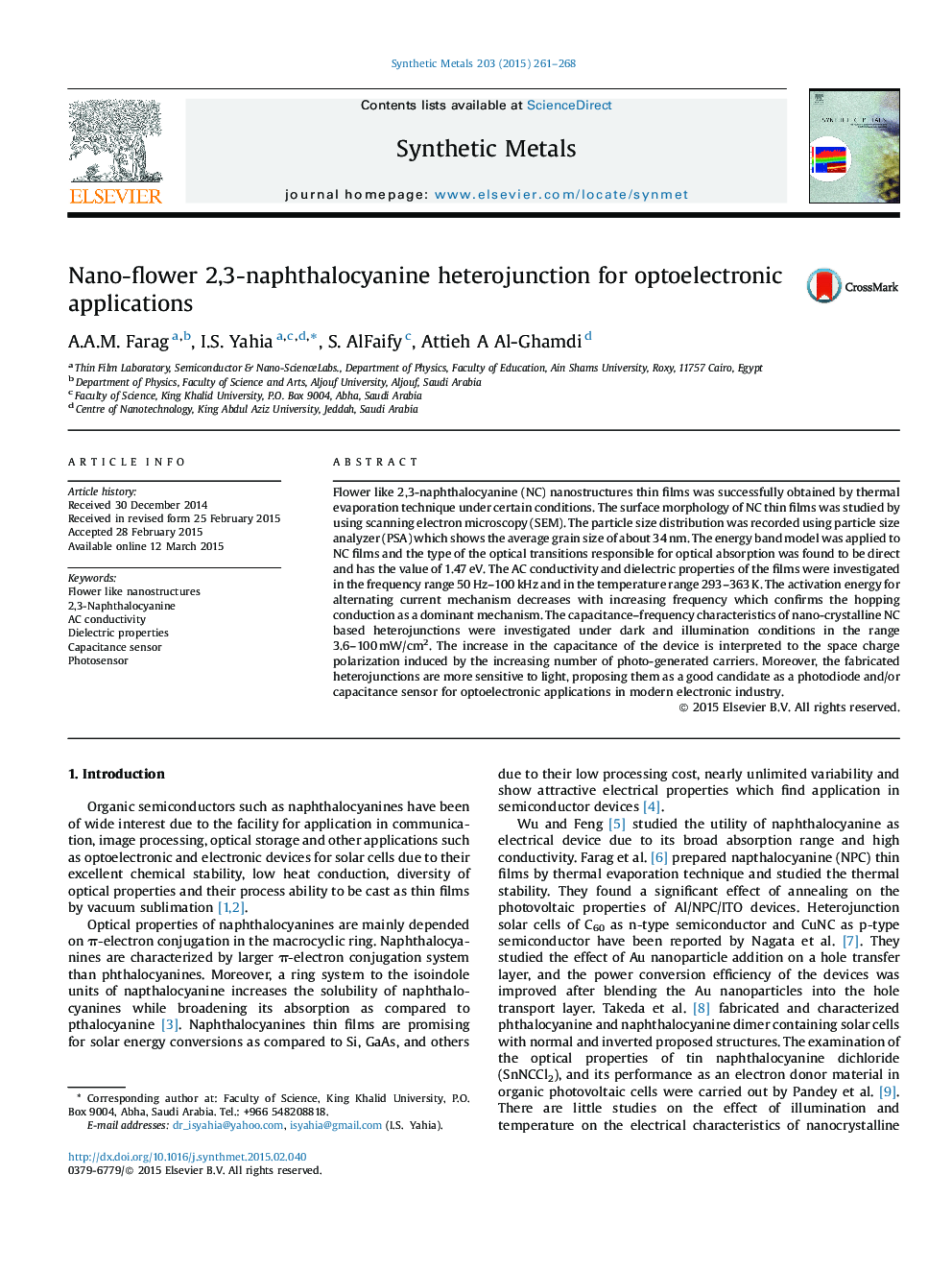| Article ID | Journal | Published Year | Pages | File Type |
|---|---|---|---|---|
| 1440586 | Synthetic Metals | 2015 | 8 Pages |
•Flower like 2,3-naphthalocyanine (NC) films was successfully obtained by thermal evaporation technique.•The surface morphology of NC thin films was studied by scanning electron microscopy (SEM).•The particle size distribution was recorded using particle size analyzer (PSA).•The capacitance–frequency characteristics were investigated under dark and illumination conditions.•The fabricated heterojunctions are more sensitive to light for photodiode and/or capacitance sensor applications.
Flower like 2,3-naphthalocyanine (NC) nanostructures thin films was successfully obtained by thermal evaporation technique under certain conditions. The surface morphology of NC thin films was studied by using scanning electron microscopy (SEM). The particle size distribution was recorded using particle size analyzer (PSA) which shows the average grain size of about 34 nm. The energy band model was applied to NC films and the type of the optical transitions responsible for optical absorption was found to be direct and has the value of 1.47 eV. The AC conductivity and dielectric properties of the films were investigated in the frequency range 50 Hz–100 kHz and in the temperature range 293–363 K. The activation energy for alternating current mechanism decreases with increasing frequency which confirms the hopping conduction as a dominant mechanism. The capacitance–frequency characteristics of nano-crystalline NC based heterojunctions were investigated under dark and illumination conditions in the range 3.6–100 mW/cm2. The increase in the capacitance of the device is interpreted to the space charge polarization induced by the increasing number of photo-generated carriers. Moreover, the fabricated heterojunctions are more sensitive to light, proposing them as a good candidate as a photodiode and/or capacitance sensor for optoelectronic applications in modern electronic industry.
